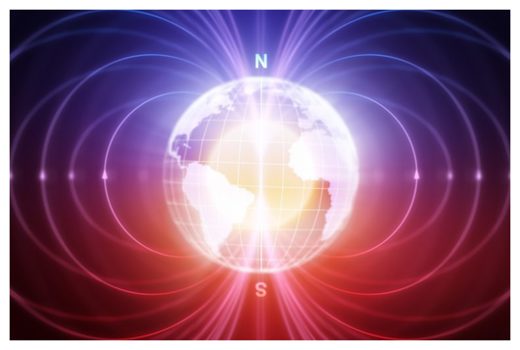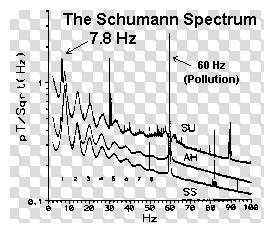En gruppe af glimrende videnskabsfolk fra HearthMath Institute er ledere i forskningen.Det er en internationalt annerkendt ikke for profit forsknings- og uddannelsesorganisation, som dedikerer sig til at hjælpe mennesker med at reducere stress, selvregulere følelser og opbygge energi og robusthed til at føre sunde glade liv.
En stor del af forskningen har undersøgt samspillet mellem hjertet og hjernen. Forskere har undersøgt hvordan hjertet og hjernen kommunikerer med hinanden og hvordan det berører vores bevidsthed og måden hvorpå vi opfatter vores verden. For eksempel, når en person føler virkelige positive følelser såsom taknemmelighed, kærlighed eller påskønnelse, så banker hjertet et slags meddelelse. Fordi hjertet slår det største elektromagnetiske felt som er produceret af kroppen, så kan det yde betydelige data for forskerne. Du kan læse mere om det her.
Nu har institutet udgivet en ny forskning som foreslår at det daglige autonome nervesystems aktivitet ikke blot reagerer til ændringer i sol- og geomagnetisk aktivitet, men også synkroniserer med de tidsvarierende magnetiske felter som er forbundet med geomagnetiske feltlinje resonancer og Schumann resonancer.
Kommentar: Denne artikel er delvis oversat til dansk af Sott.net fra: Synchronization of autonomic nervous system rhythms with geomagnetic activity found in humans
In 1952, German physicist and professor W.O. Schumann of the Technical University of Munich began attempting to answer whether or not the Earth itself has a frequency - a pulse. His assumption about the existence of this frequency came from his understanding that when a sphere exists inside of another sphere, an electrical tension is created. Since the negatively charged Earth exists inside the positively charged ionosphere, there must be tension between the two, giving the Earth a specific frequency. Following his assumptions, through a series of calculations he was able to land upon a frequency he believed was the pulse of the Earth. This frequency was 10hz.
It wasn't until 1954 that Schumann teamed up with another scientist, Herbert König, and confirmed that the resonance of the Earth maintained a frequency of 7.83 Hz. This discovery was later tested out by several scientists and confirmed. Since then, the Schumann Resonance has been the accepted term to describe or measure the pulse or heartbeat of the earth.
You can read more about Schumann Resonance here.
"To follow up and confirm these profound findings, an international study with 104 participants in five countries was conducted. The preliminary findings have confirmed and extended the results of the first study and they indicate humanity's heart rhythms are synchronized on a global scale. We are synchronized not only with each other, but also with the earth's energetic systems." (source)
The study was published in the International Journal of Environmental Research and Public Health, and its results are consistent with other studies showing that changes in solar and geomagnetic activity correlate with changes in the human nervous system activity.
It's long been known that all biological systems on Earth are exposed to invisible magnetic fields of all kinds, and at all range of frequencies, and that these fields can affect every cell and circuit to a greater or lesser degree. A number of physiological rhythms, as the study points out, have been shown to be synchronized with solar and geomagnetic activity. (source)(source)(source)(source)(source)(source)
As the study points out:
Human regulatory systems are designed to adapt to daily and seasonal climatic and geomagnetic variations; however, sharp changes in solar and geomagnetic activity and geomagnetic storms can stress these regulatory systems, resulting in alterations in melatonin/serotonin balance, blood pressure, immune system, reproductive, cardiac, and neurological processes. Disturbed geomagnetic activity is associated with the intensification of existing diseases, significant increases in myocardial infarction incidence and death, changes in blood flow, aggregation, and coagulation, increased blood pressure, cardiac arrhythmias, and seizures in epileptics.Fascinating, isn't it? it makes one wonder just how much we know about our health and what influences it.
The study outlines how, during periods of increased solar activity, which peaks every 10.5 to 11 years, "the sun emits increased ultraviolet (UV) energy and solar radio flub, which is measured by the 2.8 GHz signal" and "although the details of the physiological mechanisms in humans and animals are not yet fully understood, it is apparent that solar and magnetic influences affect a wide range of human health and behavioral processes, with the cardiovascular and nervous systems being the most clearly affected."
The study goes on to outline several examples where the human autonomic nervous system seems to be responding to this type of activity.
For this specific study, ten healthy individuals from the ages of 34 to 65 years old participated, with an average age of 53. Their Heart Rate Variability (HRV) was recorded for 31 consecutive days. To see the methods and results, as well as the statistical analysis, limitations, and more, please refer to the actual study.
Based on their results, the authors concluded:
Overall, the study suggests that daily autonomic nervous system activity not only responds to changes in solar and geomagnetic activity, but is synchronized with the time-varying magnetic fields associated with geomagnetic field-line resonances and Schumann resonances. A likely explanation for how solar and geomagnetic fields can influence human nervous system activity is through a resonant coupling between our nervous systems and geomagnetic frequencies (Alfvén waves), or ultra low frequency standing waves in the earth-ionosphere resonant cavity (Schumann resonances) that overlap with physiological rhythms.Findings like these, and many more, are exactly why the HeartMath institute began what's known as the Global Coherence Initiative (GCI).
Others are working on identifying how these fields can be sensed.
A recent study published by Kirschvink in the journal Nature Communications suggests that a protein in the human retina, when placed into fruit flies, has the ability to detect magnetic fields. The research claims that it can serve as a magneto sensor, but it's unknown whether or not humans use it in this way as well. (source)





Læserkommentarer
dig vores Nyhedsbrev